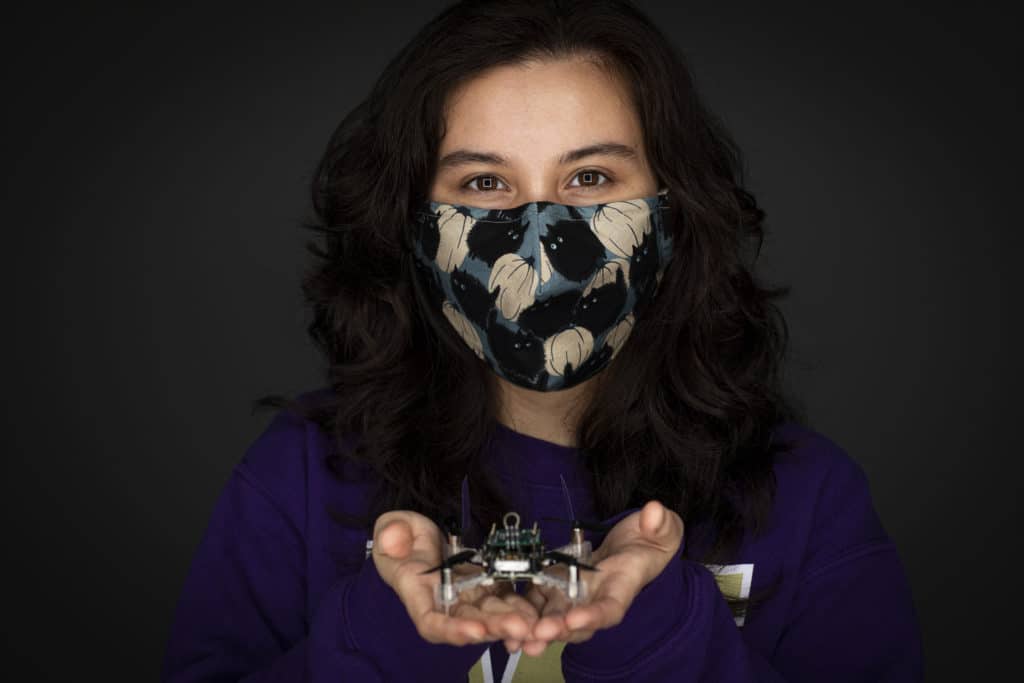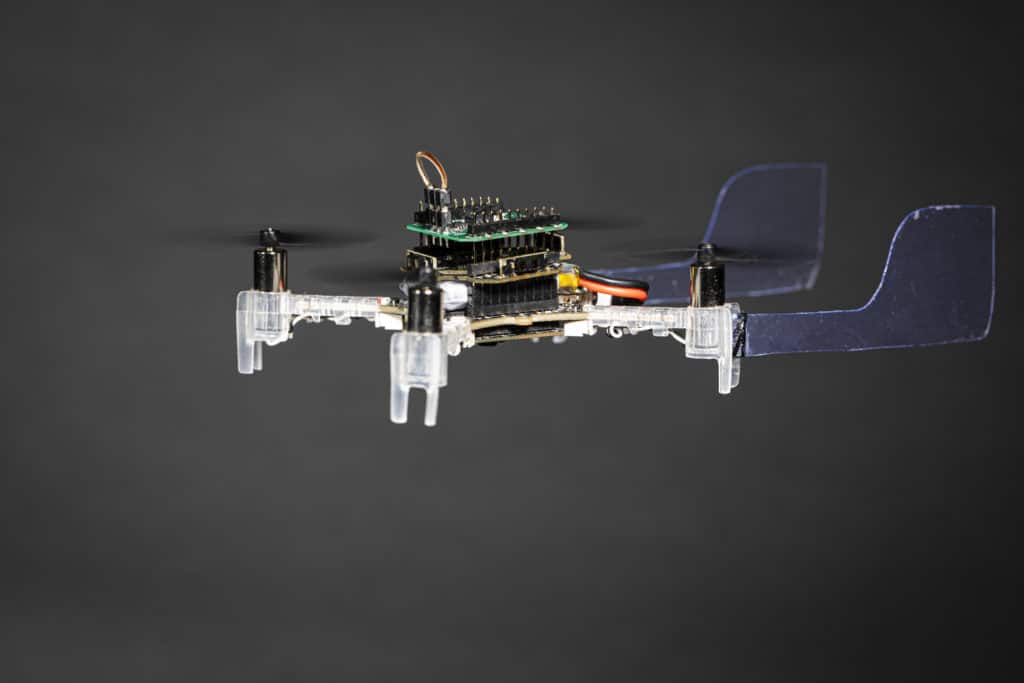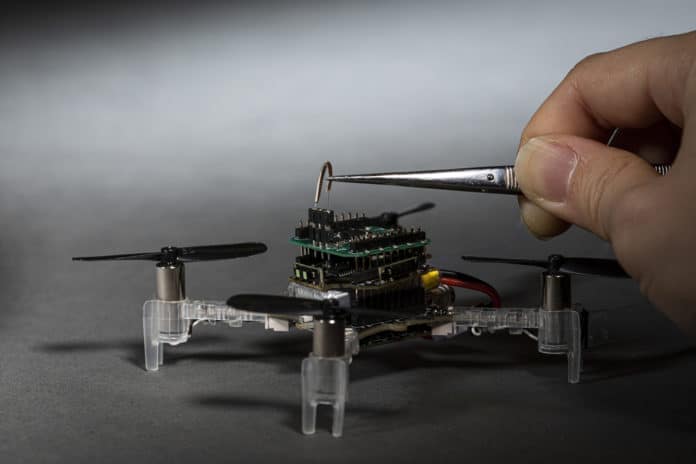Engineers are interested in developing devices that can navigate areas that might be too dangerous. By sniffing out chemicals in the air, these devices could locate disaster survivors, hazardous gas leaks, incipient fires, or explosives, reducing human hazards and drastically improving performance on tasks.
However, human-made chemical sensors cannot yet compete with animals’ olfactory organs, whose abilities have been nurtured over millions of years of evolution. Researchers from the United States decided to take an extraordinary path: introducing an insect’s sense of smell into the drone.
Ph.D. student Melanie Anderson and a team from the University of Washington have developed Smellicopter: an autonomous drone that uses an antenna from a live moth to navigate its way toward a smell. Smellicopter can also sense and avoid obstacles as it travels through the air, and is programmed to move upwind, tracking odors to their source. This human-safe, miniature tracker drone can easily fit in the palm of an adult.

The sense of smell is very crucial to moths. They use their odor-sensing antennas to sense chemicals in their environment and navigate toward sources of food or potential mates. The antenna, or the “nose” of the moth, consists of hundreds of tiny hairs containing cells that sense odors. A single scent molecule can trigger lots of cellular responses. This process is super-efficient, specific, and fast.
This antenna stays biologically and chemically active for up to four hours after being removed from the moth. The researchers said this time span could be extended by storing them in the fridge. So they placed moths in the fridge to anesthetize them before removing an antenna.
Engineers used antennae from a live Manduca sexta hawkmoth for Smellicopter and placed it to a suite of electronics to guide a drone towards specific scents. Then, tiny wires are inserted into each end of the hollow antenna to connect it to the electrical circuit. The researchers then measure the average signal from all of the cells in the antenna.

Tests in a wind tunnel have confirmed that the biohybrid system is better at responding to a floral scent or the smell of ethanol – than a typical human-made sensor. The antenna reacted more quickly and took less time to recover between puffs.
To make the drone a flying tracker, the engineers made several more changes to its design. They equipped the Smellicopter with four infrared sensors. By scanning the surrounding area ten times per second, these sensors help the drone avoid obstacles. When something comes within about eight inches (20 centimeters) of the drone, it changes direction by going to the next stage of its cast-and-surge protocol.
“So if Smellicopter was casting left and now there’s an obstacle on the left, it’ll switch to casting right,” said Melanie Anderson, a UW doctoral student in mechanical engineering. “And if Smellicopter smells an odor but there’s an obstacle in front of it, it’s going to continue casting left or right until it’s able to surge forward when there’s not an obstacle in its path.“
Besides, the developers have installed two plastic fins on the back of the drone to create drag to help it be constantly oriented upwind. “From a robotics perspective, this is genius,” said co-author of the research Sawyer Fuller, a UW assistant professor of mechanical engineering. “The classic approach in robotics is to add more sensors, and maybe build a fancy algorithm or use machine learning to estimate wind direction. It turns out, all you need is to add a fin.“
In the future, a Smellicopter could be used to detect hidden explosives, gas leaks, or to look at agricultural crops.
